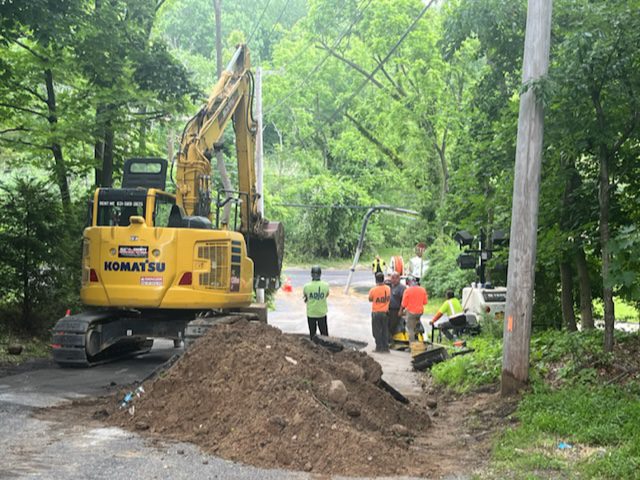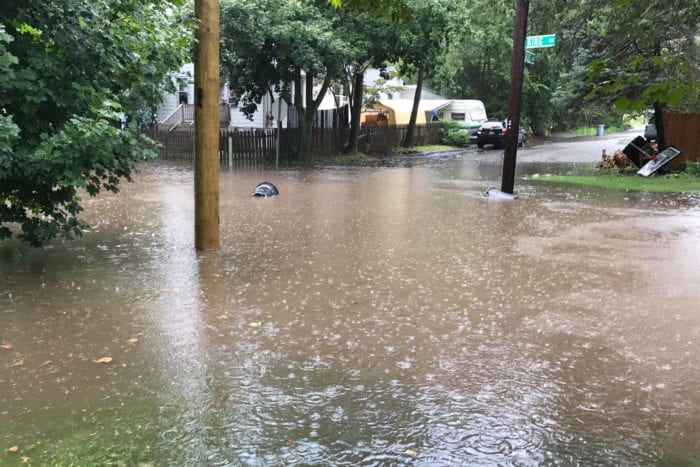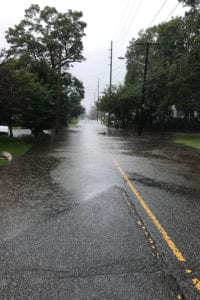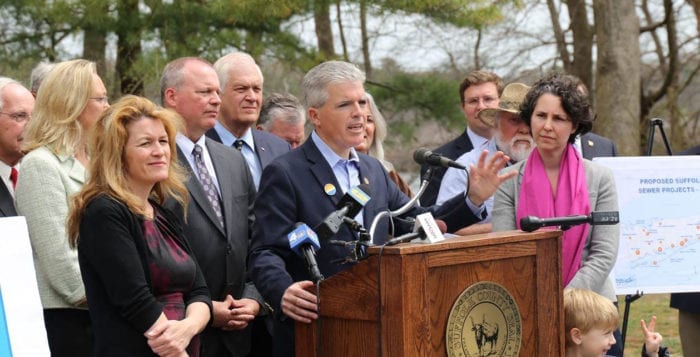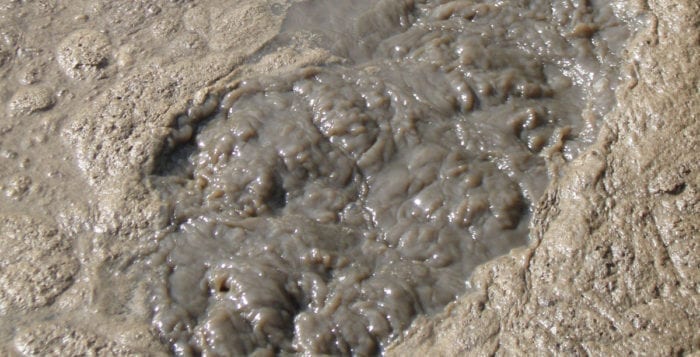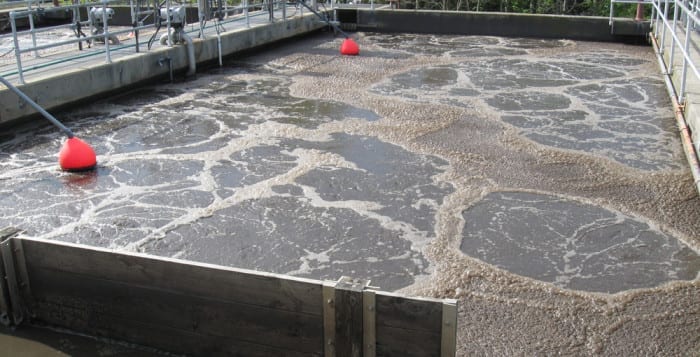By Mallie Jane Kim
A river of water ran down the steep hill of Gnarled Hollow Road when Sotiria Everett arrived home from work June 4. The water appeared to be coming from under the street at the top of the slope, she said, adding she had to move cones and navigate around Suffolk County Water Authority trucks to reach her driveway.
“It was a disruption for us, obviously,” she said, noting the water to their house was off until about 10:30 p.m. that night. “The other concern is the damage it’s doing now in Setauket Harbor.”
A broken pipe spewed about 350,000 gallons of mostly treated wastewater over about 4.5 hours from the corner of Harbor Hill Road and Gnarled Hollow Road, according to a New York State sewage pollution alert. The water, which hadn’t yet gone through the final step of disinfection, followed surface streets to pour into Setauket Harbor, near Setauket Pond Park.
The place where the effluent entered the tidal harbor is the slowest to flush out and get diluted into the Long Island Sound because of its tucked-back location, according to George Hoffman of the Setauket Harbor Task Force.
The high-pressure pipe that burst originated from a sewer facility that processes wastewater from Stony Brook University and surrounding neighborhoods. It was mostly treated but lacked the final disinfection step, which takes place in Port Jefferson before the treated water is pumped out into Port Jefferson Harbor, a method water quality advocates say is outdated.
“If you were building it now, you wouldn’t be allowed to outfall sewage into the middle of the harbor,” Hoffman said. “We’ve learned so much since then about nitrogen in the harbor.”
Too much nitrogen in area waters leads to various issues, including dangerous bacteria and algae blooms.
But water quality isn’t the only concern with piping effluent into the harbor, according to County Legislator Steve Englebright, D-Setauket.
“There are two broad themes that emerge when we talk about groundwater on Long Island,” Englebright said. “One is quality of water, and the other is quantity of water—this is a little of both.”
Suffolk County draws water from a single-source aquifer, and if more water from that source is pumped into the harbors than is recharged by rain, the aquifer starts to drain.
Coincidentally, that same week, Suffolk County legislators met about modernizing area sewage lines, including the one in question that runs from Stony Brook University to Port Jefferson, according to Englebright.
The group heard a presentation about the possibility of using processed sewage to water athletic fields and other green spaces on Stony Brook University’s campus, as well as St. George’s Golf and Country Club next door. Englebright pointed to Riverhead’s Indian Island Golf Course, which has been watering with effluent since 2016, as a model for this method.
In addition to helping recharge the aquifer, this method obviates the need to buy nitrogen to fertilize the grass since the cleaned wastewater already contains it.
The county is currently working out its budget, according to Englebright, and though he said it’s unclear whether such updates will make it into the budget as a capital improvement this year, he’s glad it is at least on the table.
“The sewer break underlined the urgency and reinforced the timeliness of some of these conversations,” he said. “It is important for us to reassess.”
After the spill, the Suffolk County Department of Health Services warned residents to take precautions when recreating in Setauket or Port Jefferson harbors and closed several area beaches, including Little Bay, Grantland, Bayview, Indian Field, and Bayberry Cove. The county lifted its advisory June 10, after testing showed bacteria was within “acceptable limits” for all areas except Indian Field Beach, which remained closed.
Englebright said the high-pressure pipe may have burst at that point because it takes a turn to be nearly vertical, accommodating the steep grade of the street. “That’s where the pressure was concentrated,” he said.
Regardless of why it happened, area resident Everett hopes it won’t happen again. The bottom of the steep road, she said, is often flooded enough from rainy weather.
“The area is always prone to flooding, and you add that it’s not from Mother Nature, not from rain,” she said. “Any way that could be prevented would be ideal.”

